From the first moment, something inside me knew I was going to like Hoi An. I had a feeling. Without realizing it, I had been looking forward to getting to know the city almost from the moment we entered Vietnam. In fact, I had already fallen in love with it when Toni started telling me about it.
Sure, it’s true, everyone talks about how beautiful the old town is, with its port, quaint streets, shops, and overall charm. But it’s also true that others describe it as a very touristy or artificial city that resembles an oriental theme park.
I don’t know why I decided to believe the positive reviews, and instead of being disappointed, which often happens when you have high expectations of a place, I ended up falling in love with Hoi An. I couldn’t get enough of wandering around, having coffee, or getting lost in its shops and souvenir stands, even though I had no intention of filling my backpack with trinkets.
Maybe it’s because I already knew what to expect, or perhaps because I had been experiencing authenticity from a country far less spoiled than I had been led to believe during my motorbike trip. Yes, Hoi An may not be the most authentic place you’ll find in Vietnam, but it certainly has its charm.
Hoi An is a coastal city whose port was vital for trade between the 16th and 18th centuries. It sits at the mouth of the Thu Bon River as it flows into the South China Sea. Thousands of tourists, drawn by its UNESCO World Heritage designation, visit the city’s beautiful and well-preserved old town.
Hoi An is located in Quang Nam Province, in central Vietnam, and we had the feeling of being about halfway through our journey when we arrived.
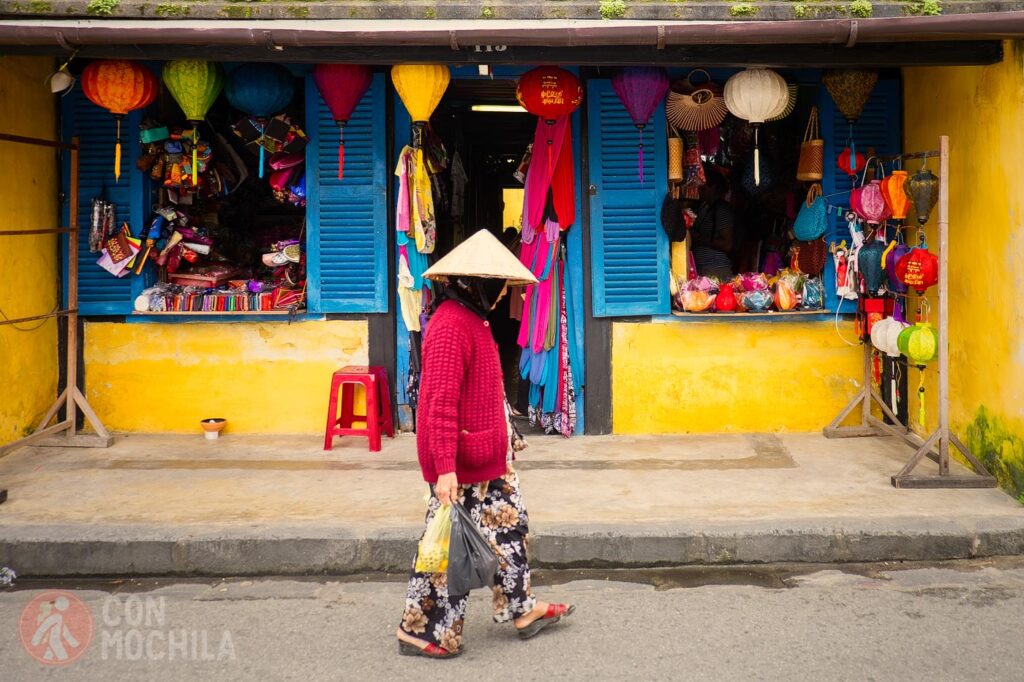
Hoi An has a tropical climate, with warm temperatures of around 28ºC (82ºF) year-round. Planning your trip according to the seasons will help you make the most of your experience.
Currently, and until further notice from Vietnamese authorities, citizens of 25 countries can travel to Vietnam without having to apply for a visa. You can obtain a 45-day visa exemption for Vietnam, allowing you to stay in the country for over a month and a half for free.
However, if you plan to stay longer, you will need to apply for a Vietnam visa. In the link above (coming soon), you’ll find all the ways to apply for it quickly and easily, with clear explanations.
It goes without saying how important it is to travel to Vietnam with a good insurance. We were the first ones to offer the famous 5% discount on IATI Insurance, but you also have it available with Heymondo Travel Insurance.
Follow the links bellow to get a discount on their website:
We arrived in Hoi An after completing a 143 km motorbike journey from Hue, including two technical stops and battling strong winds and rain. If you’re considering this adventure, you can follow our motorbike journey through Vietnam with stage-by-stage information and tips.
Da Nang Airport is the nearest one, with domestic flights from major cities like Hanoi, Ho Chi Minh City, and Hue, as well as international flights from Bangkok, Singapore, and Siem Reap. From Da Nang, you can take a minibus or taxi to Hoi An, which takes about 45 minutes.
There’s no train station in Hoi An, so you’ll need to arrive at Da Nang Station, which receives daily trains from Hanoi, Ho Chi Minh City, Hue, and Nha Trang. Most agencies or guesthouses can make a reservation for you.
From Da Nang, you can take a taxi or bus to Hoi An (be sure to check the official price listed on the bus to avoid being overcharged). Several bus companies offer daytime or sleeper buses along Vietnam’s coast, stopping at major cities, including Hoi An.
You have several options for getting to Hoi An from Hanoi. By plane or train, you’ll arrive in Da Nang, 30 km from Hoi An, where you can take a minivan or taxi. Alternatively, buses will take you directly to Hoi An. Here are some links:
Similarly, from Ho Chi Minh City, you can fly or take a train to Da Nang and then a minivan or taxi to Hoi An. Buses also provide direct service to Hoi An. Here are some links:
Hue is located just 120 km from Hoi An, so a combined train and minivan trip or a direct bus ride is the most recommended option (about a 3-hour journey). Here are some links:
While many hotels, guesthouses, and restaurants in Vietnam offer free Wi-Fi, some travelers prefer or need a constant connection. We’ve included details on obtaining a eSIM Vietnam card with unlimited data. If you want to get one directly, use the following link (with a discount):
The options in this city are endless. You can easily spend a couple of days wandering through the narrow streets of Hoi An’s old town without getting tired, as it always has something to offer travelers.
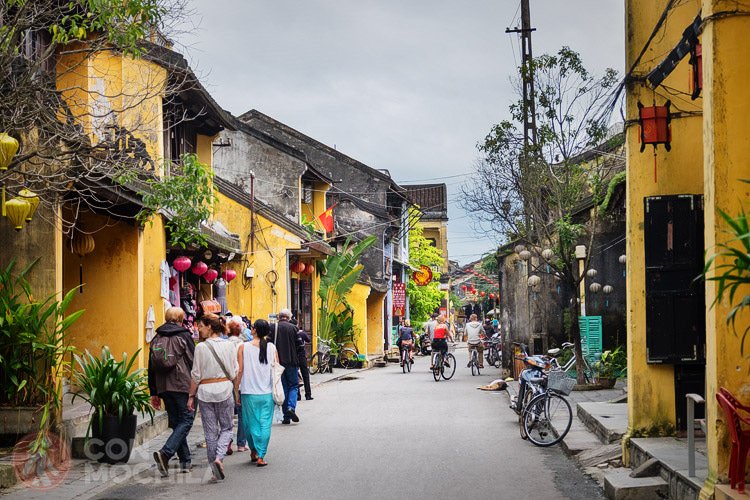
From historic buildings, museums, old houses open to visitors, and assembly halls known as hoi quan, to restaurants, craft shops, colorful lanterns, tailors offering well-priced custom dresses, and various souvenirs. There’s plenty to see and explore.
Among the historic buildings, some notable merchant houses can be visited, such as Tan Ky. This two-century-old house, built by a Vietnamese family, showcases strong Chinese and Japanese architectural influences.
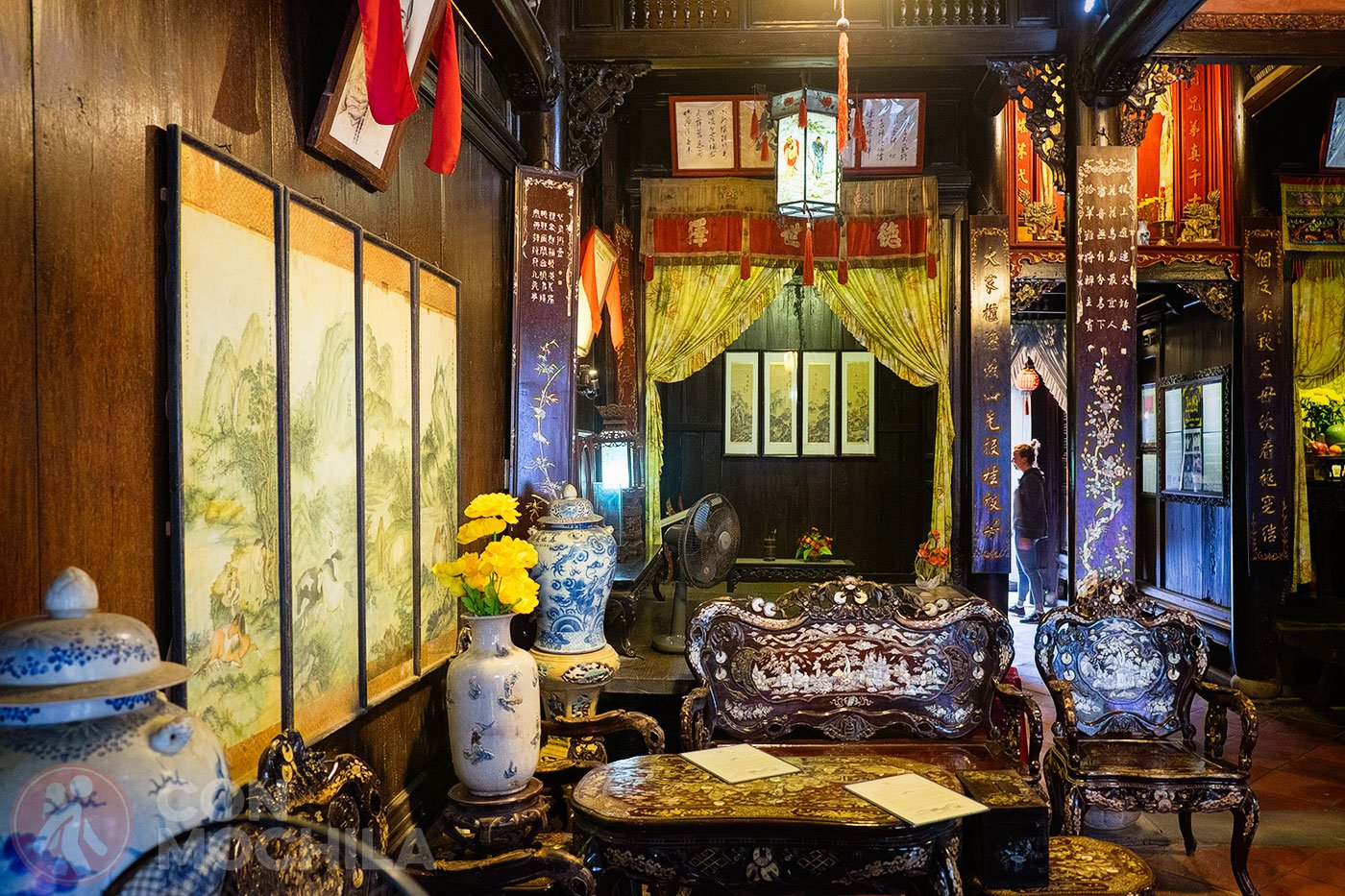
The two-story wooden house, though quite dark inside, is filled with intricate details that captivate the eye: birds, poems, and crossed sabers wrapped in silk. The inner courtyard allows light into the house and also collects rainwater.
Right in the center of town is the Japanese Covered Bridge, also known as Cau Nhat Ban (or Lai Vien Kieu). Built in 1593 from wood and stone to connect the Chinese and Japanese quarters, today it stands as one of Hoi An’s top tourist attractions after several renovations.
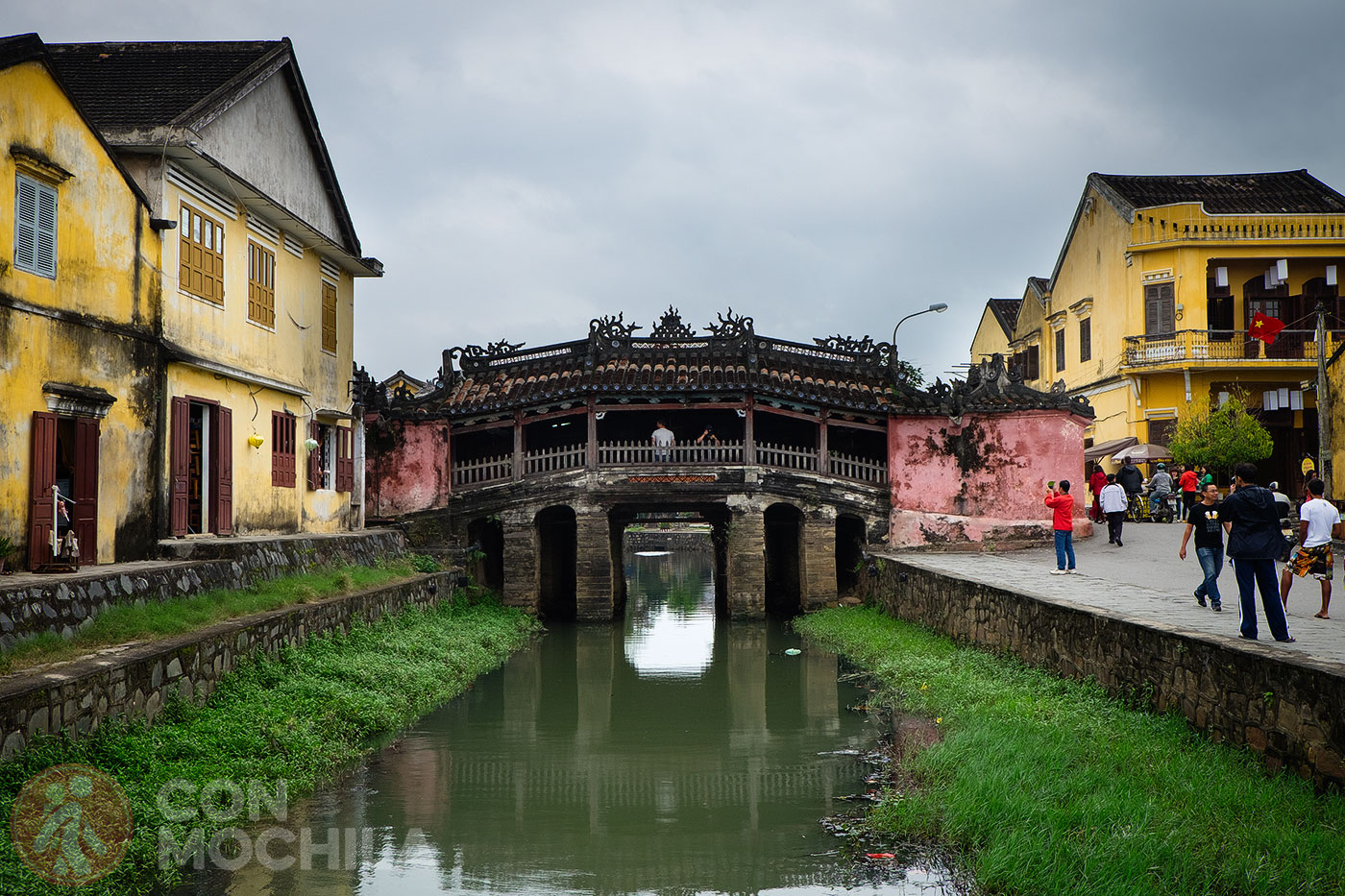
Its interior, decorated with lanterns, houses a small altar called Chua Cao, as well as a small photography museum.
Among the various Chinese assembly halls, we chose to visit the Quảng Đông Cantonese Assembly Hall, one of the most engaging places we explored. Built in 1855 by the Cantonese community in the city, it includes a temple dedicated to the warrior Quan Cong and the sea goddess Thien Hau.
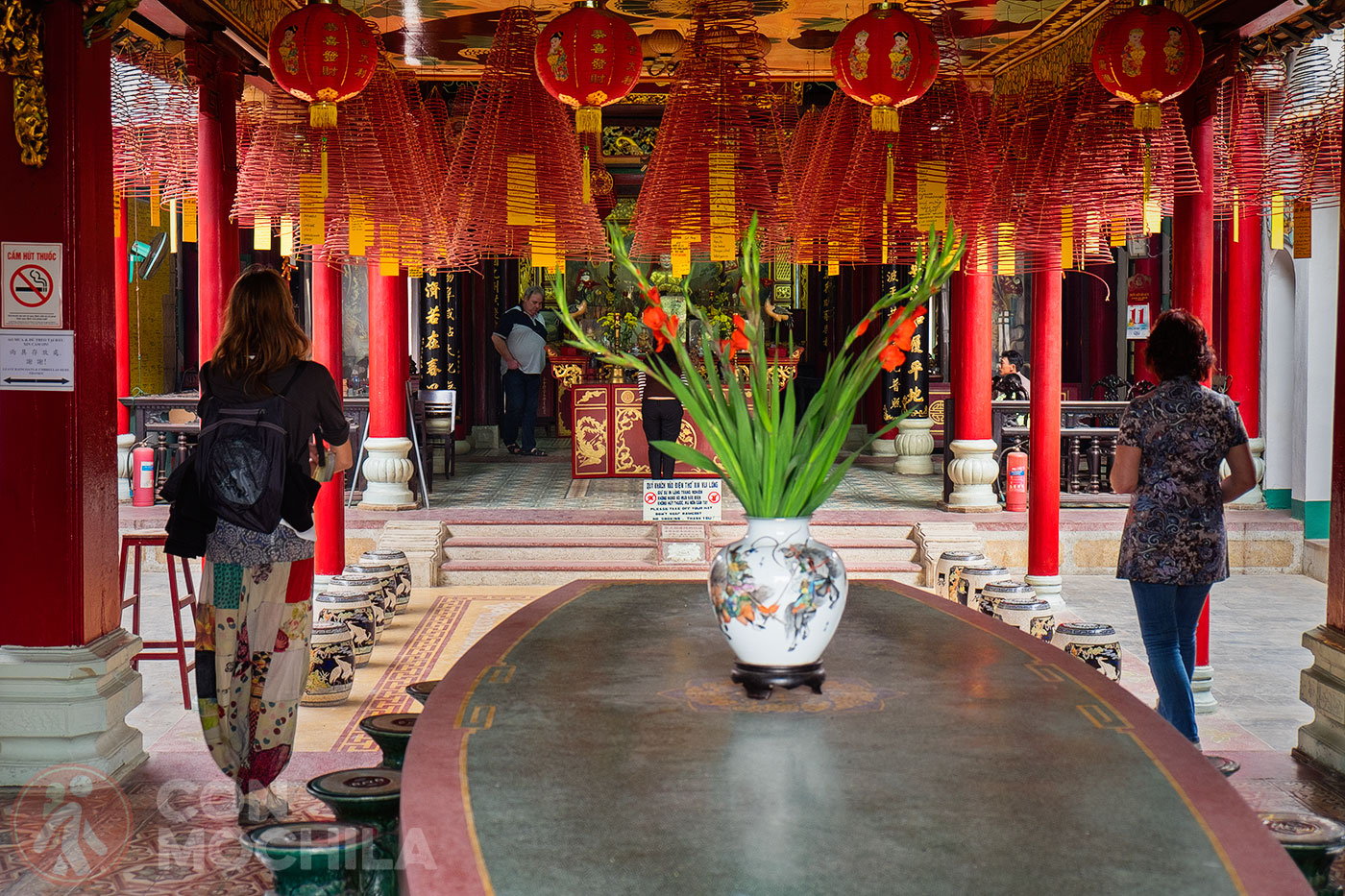
One of the most fascinating features is the enormous spirals of incense hanging from the ceiling, with small papers inside, wishes written by people.
Even if your time in Hoi An is limited, we highly recommend taking a stroll through the streets at dusk. When the sun sets, the city becomes even more lively with thousands of colorful lanterns lighting up every corner. The atmosphere feels particularly magical during the monthly lantern festival, held on the fourteenth day of each month.
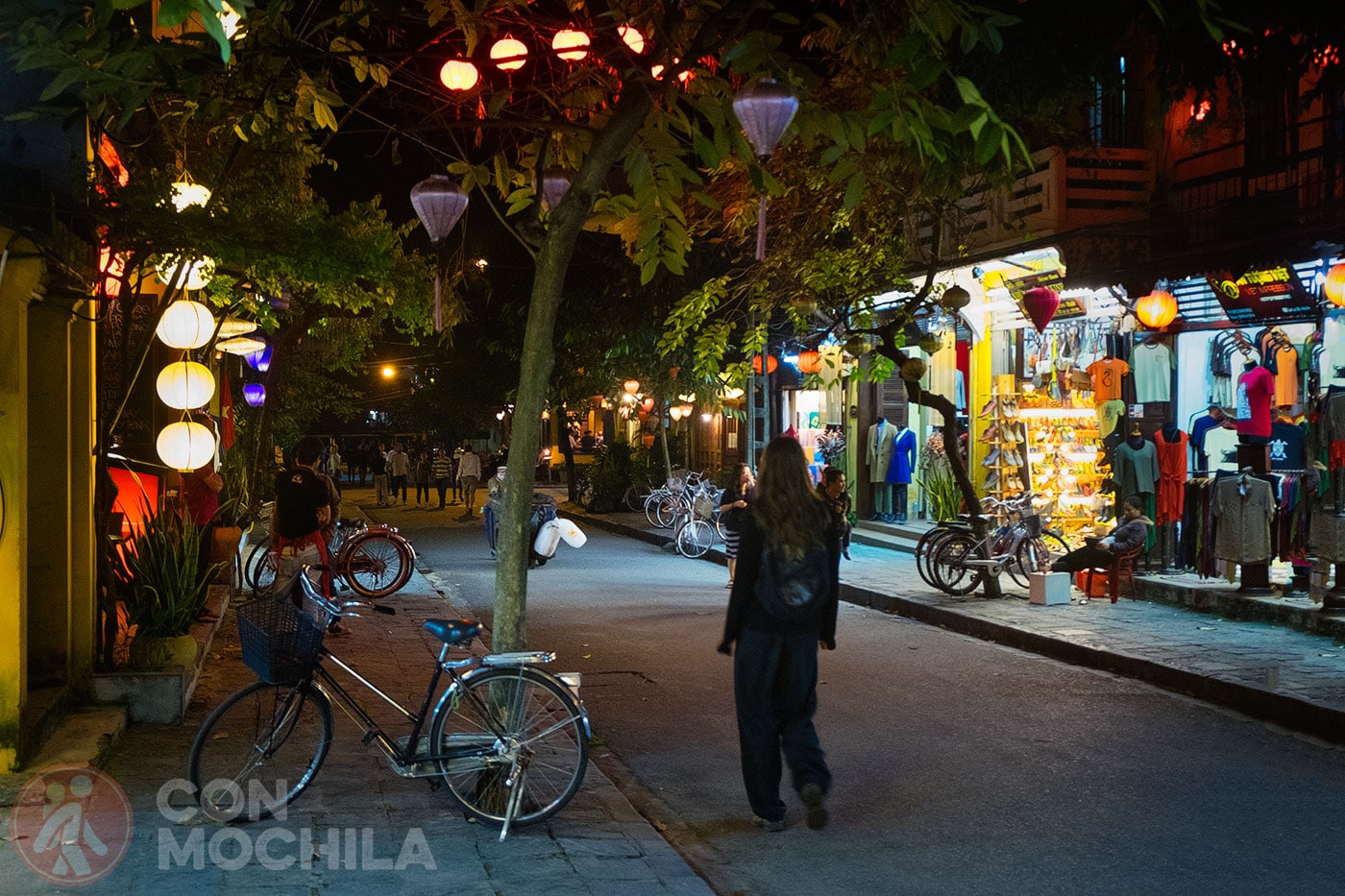
Don’t miss the chance to experience this relaxed and beautiful city at night.
To recharge after your walks, you’ll find dozens of restaurants where you can enjoy traditional Vietnamese dishes, as well as international cuisine. We feasted on spring rolls prepared in a variety of ways and satisfied our craving for Indian food.
A great option is to sit on a terrace overlooking the river, sip on a beer, juice, or soft drink, and relax while watching people pass by or fishermen and tourists drifting along the river in small boats.
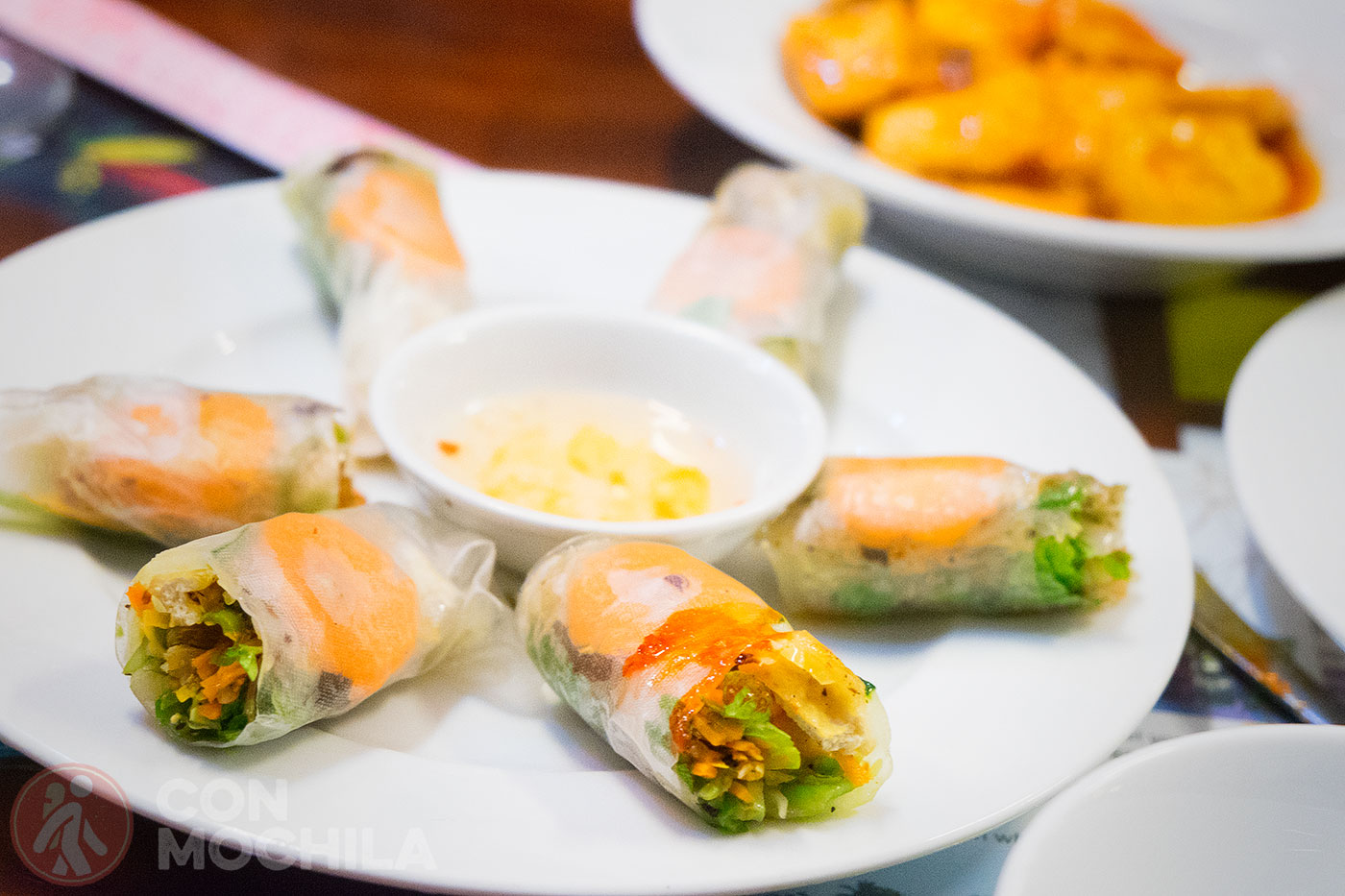
If you enjoy learning about local food, there are cooking classes available where you can discover the secrets behind some delicious recipes.
A visit to Hoi An’s central market, located by the river, promises an explosion of color, smells, and flavors. Here, you’ll find everything from fruit and fish stalls to silk fabric sellers and small food stands offering local dishes.
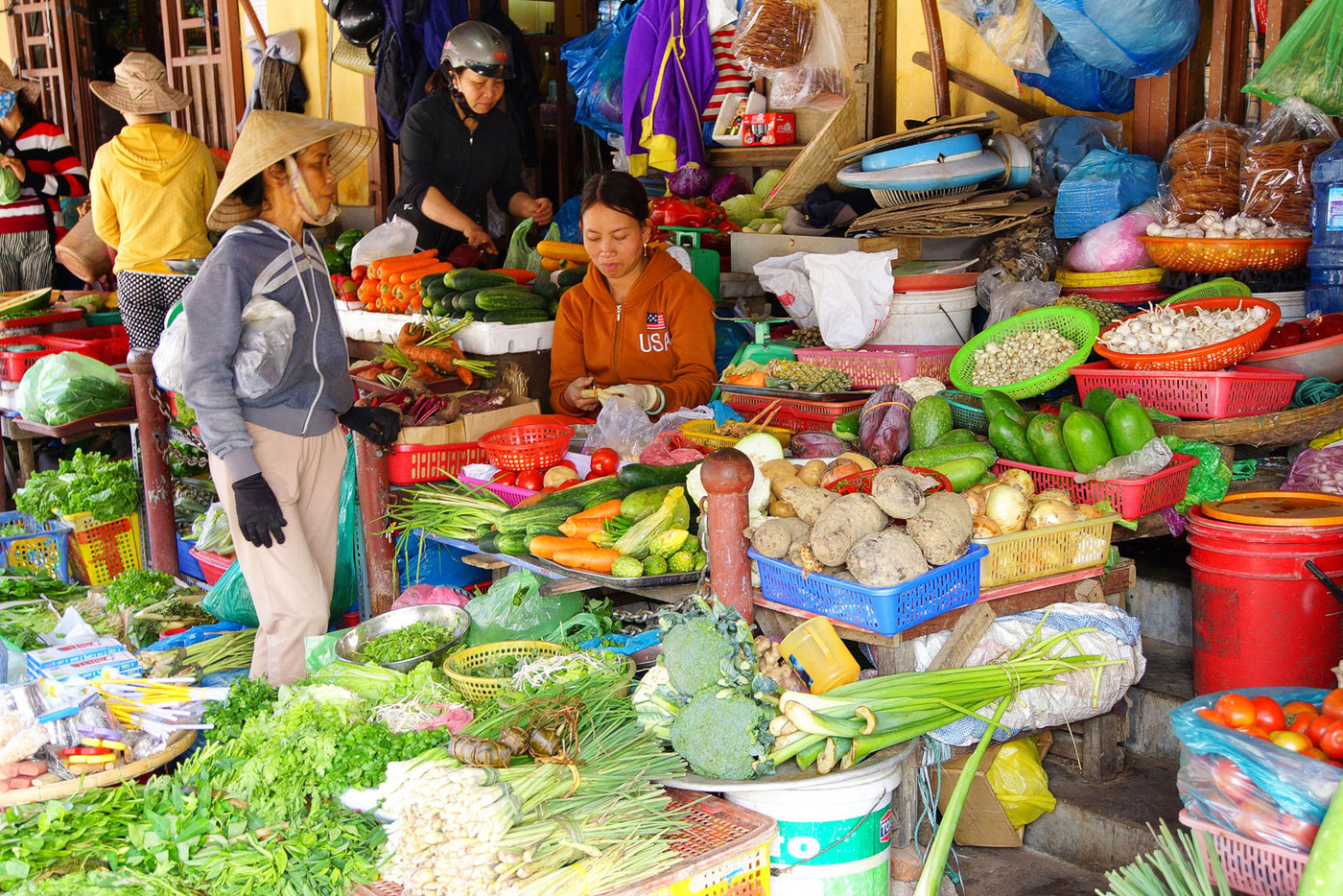
If you’re an early riser, visit around 7 a.m. to watch the fishermen return from the river and witness the lively fish-buying and selling process.
For a peaceful escape from Hoi An’s tourist crowds and to get to know the surrounding area, consider taking a trip to a nearby fishing village. Early in the morning, before sunrise, board a boat that will take you across the Thu Bon River and watch as fishermen cast their nets.
On the other side, you’ll see fishermen loading ice onto their boats and women gathering to welcome the sailors arriving in round boats, marking the start of the fish trading ritual.
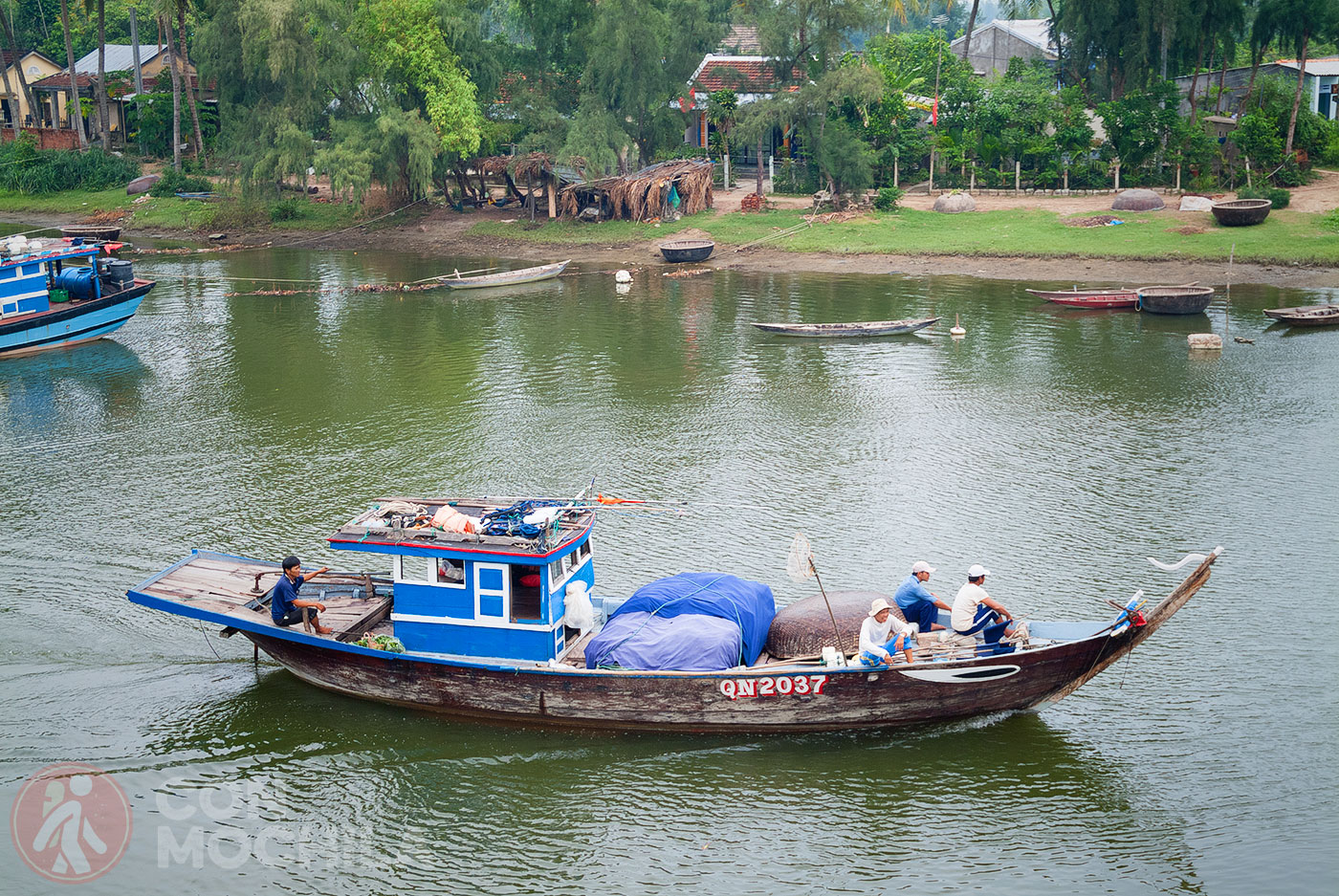
You can also visit a factory where fish is dried or where the famous fish sauce is made.
Hoi An also has a couple of beaches, Cua Dai and An Bang, stretching over 30 km of white sand. However, if you visit during the colder months, you may not be able to fully enjoy them due to the wind and cold weather (we visited in January). We decided to check them out of curiosity, and since we had a motorbike, it wasn’t hard to reach them while passing by rice fields.
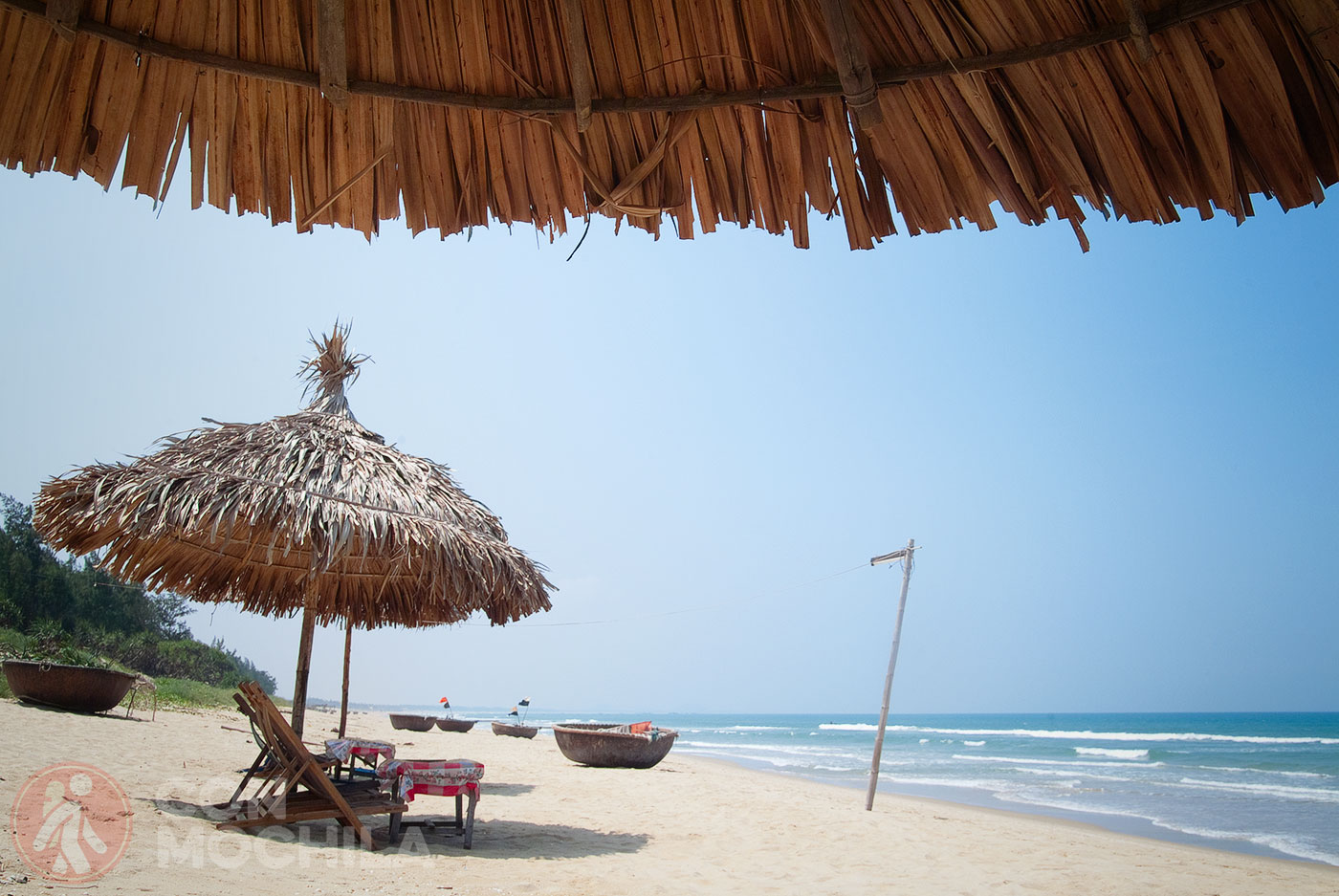
Depending on the season, you may spot the typical round fishermen’s boats, known as thung chai.
Located in Da Nang, north of Hoi An, the Marble Mountains resemble volcanoes rising up amidst the population. However, instead of lava, they contain caves with Buddha figures. It is said that each of the mountains represents a natural element (water, wood, earth, metal, and fire).
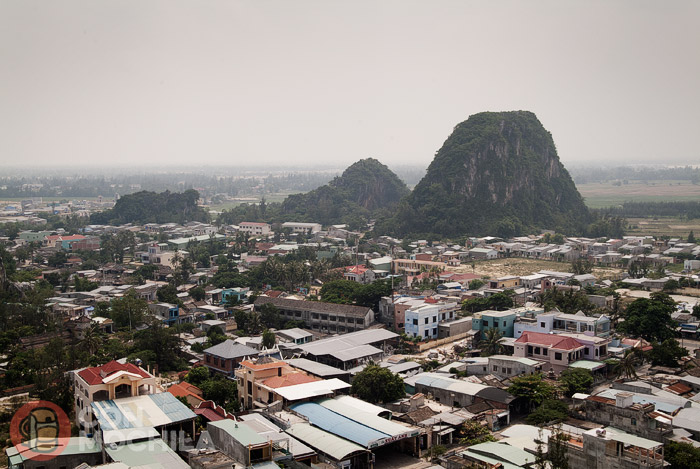
To access the largest mountain, Thuy Son (water), there are two trails. Along the way, you’ll find several pagodas and caves, such as Tam Thai Tu, Vong Giang Dai, Linh Ong, Van Thong, and many others.
Built entirely of brick, the My Son Sanctuary, the ancient kingdom of Champa, is located near Hoi An and has been declared a World Heritage Site, on par with Angkor and Bagan. It was a religious center from the 4th to the 13th century. Most of the temples were dedicated to the Cham kings, associated with Shiva, who was considered the founder of the Champa dynasties.
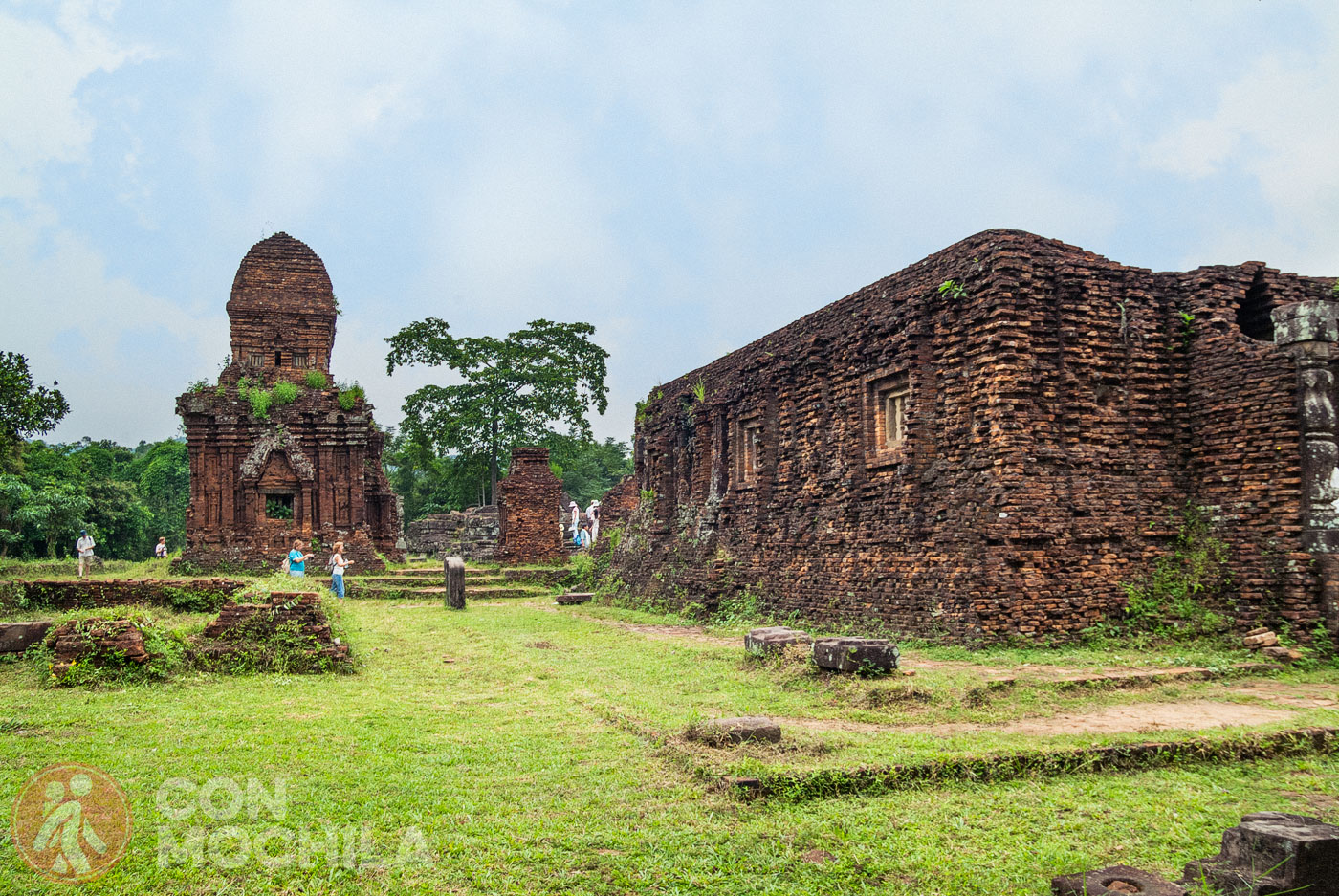
You can reach it by motorbike or minivan from Hoi An, and once at the entrance, a jeep will take you to the ruins.
If you want to explore the surroundings of Hoi An, there’s no better way than by bike. With this Hoi An bike tour, you’ll discover fishing villages, water buffalo, rice fields, and even visit a local family’s home.
Moon’s Homestay: If you want to be close to Hoi An’s old town but still have some privacy, this accommodation is perfect. You’ll only see activity in the evenings, as the night market sets up on the street in front. The family that runs it is lovely, and the rooms are very comfortable and bright. Nando Baba and I spent a week here 😉
Vesper Homestay: This is a pleasant and spacious family home run by a friendly couple and their young son. On the ground floor, where you’ll find the reception, there’s a kitchen and a breakfast table. There’s also a garden where you can rent bikes or park your motorbike. The rooms are spacious, bright, and very clean.
You can also check out our picks for the best accommodations in Hoi An.
Hoi An is home to one of the largest concentrations of tailors, reportedly over 700. While it may not always make sense for independent travelers, many visitors decide to have a suit, shirt, or dress custom-made during their stay.
Tailors can create bespoke suits from scratch or replicate garments you bring to them. Be sure to do your research and avoid scams; some tailors no longer have their own ateliers and instead subcontract the work.

Pay only a small deposit; this ensures that your garment will be finished exactly how you want it.
NO, it doesn’t cost money to walk through the streets of Hoi An (though from what we’ve read, it almost did). However, there is a ticket that includes five passes to visit attractions that require an entrance fee, such as museums, temples, and traditional houses.
It’s not essential, but we think it’s a great way to enhance your experience while walking through the old town. Price: 120,000 VND.
The best way to explore Hoi An’s narrow streets is on foot, as motorbikes are banned in the city center during certain times of the day.
Renting a bicycle is another great option, allowing you to reach beaches like Cua Dai and An Bang.
You can also rent a motorbike to explore Hoi An’s surroundings, such as the Marble Mountains or My Son Sanctuary. Just remember to bring enough fuel!
If you plan to drive a motorbike or any vehicle in Vietnam, we recommend getting an international driving license in case you encounter a police check. It’s also important to have travel insurance that covers you in case of an accident.
Click on the image and it will take you to a new Google Maps window with all the points of interest to travel around Hoi An.